The Ancient ‘Flying Machines’ Of Icarus and Daedalus
Ellen Lloyd – AncientPages.com - The legend of Icarus and Daedalus, written by the Roman poet Ovid in his work Metamorphoses, is today considered to be a colorful legend, a fiction story.
Is it merely a legend, or does this story tell of actual events?
Some who studied the peculiar legend suggest the story could, in fact, be a testimony of prehistoric aviation.
The Fall of Icarus (1635-7) by Jacob Peter Gowy (c 1615-1661). Credit: Public Domain
Daedalus was a very skilled architect and craftsman. He designed and built the Labyrinth, in which the Minotaur, a monstrous creature, was hidden. Satisfied with what he had accomplished, he wanted to return home, taking his son with him.
However, Daedalus knew that king Mimos would not allow him to leave and that he was shut in by sea. He had to devise an idea of how to flee from king Mimos and his men.
"The king may block my way by land or across the ocean, but the sky, surely, is open, and that is how we shall go, " he thought.
"With these words, he set his mind to sciences never explored before, and altered the laws of nature," according to Ovid.
There was a solution to the problem. They needed to fly to escape from the king and his men.
Daedalus needed to build a flying machine, which is exactly what he did. He constructed two aircraft, one for himself and the other for his son, Icarus. Daedalus gave his son lectures on how to operate the flying vehicle. After that the two of them began their sky travel. The people on the ground who saw these flying machines were astonished.
The author Ovid describes the scene as follows:
"Some fishermen, perhaps plying with his quivering rod, some shepherd leaning on his staff, or a peasant bent over his plow handle caught sight of them as they flew past and stood still in astonishment, believing that these creatures who could fly through the air must be gods."
The two pilots managed to leave Crete and continued their flight across the Aegean Sea, but the most unfortunate accident occurred.
For the young Icarus, the opportunity of being able to fly was such a thrilling experience that he forgot everything his father had told him before the trip.
Pieter Brueghel, Landscape with the Fall of Icarus (c. 1558). Credit: Public Domain
The young man soared higher and higher skywards. He then lost control over the aircraft and was "swallowed up in the deep blue waters, which are now called after him."
If Icarus had not been over-excited, he would not have crashed into the water and would probably have managed to fly all the way home.
Still, one can understand the young man's excitement. Only the gods were privileged to fly, and there he was, an ordinary human, high up in the air, looking down at all things on the ground. No wonder he wanted to get as much as possible out of this unusual experience.
"Among the credulous, the significance of the name of a people of Asia Minor, the Capnobates, 'those who travel by smoke,' gave rise to the assertion that Montgolfier was not first in the field--or instead in the air--since indeed this people must have been responsible for the first hot-air balloons.
Far less questionable is the legend of Icarus, for here, it is possible to trace a foundation of fact in the story.
Such a tribe as Daedalus governed could have had hardly any knowledge of the rudiments of science, and even their ruler, seeing how easy it is for birds to sustain themselves in the air, might be excused for believing that he, if he fashioned wings for himself, could use them.
In that belief, let it be assumed, Daedalus made his wings; the boy, Icarus, learning that his father had determined on an attempt at flight, secured the wings and fastened them to his shoulders. A cliff seemed the likeliest place for a 'take-off,' and Icarus leaped from the cliff edge only to find that possessing wings was not enough to assure flight to a human being.
How can we be sure that the story of Icarus and Daedalus is not just a fable? We have to remember that Daedalus was a master architect, capable of constructing many highly advanced things. When he built his flying machine, he knew exactly how to proceed and was fully aware of what could occur if something went wrong.
That was why he taught his son what he should and should not do.
Some scholars argue Daedalus's knowledge about the aircraft's limitations proves the story's authenticity and represents a perfect example of ancient aviation skills.
Updated on June 29, 2022
Written by - Ellen Lloyd – AncientPages.com
Copyright © AncientPages.com All rights reserved. This material may not be published, broadcast, rewritten or redistributed in whole or part without the express written permission of AncientPages.com
More From Ancient Pages
-
 Half-A-Million Year Old Signs Of Extinct Human Species Discovered In Polish Cave
Archaeology | Nov 30, 2022
Half-A-Million Year Old Signs Of Extinct Human Species Discovered In Polish Cave
Archaeology | Nov 30, 2022 -
 On This Day In History: Ensisheim Meteorite Fell To Earth – On Nov 7, 1492
News | Nov 7, 2016
On This Day In History: Ensisheim Meteorite Fell To Earth – On Nov 7, 1492
News | Nov 7, 2016 -
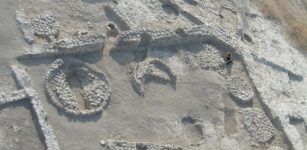 Olive Trees Were First Domesticated 7,000 Years Ago In The Jordan Valley
Archaeology | Jun 17, 2022
Olive Trees Were First Domesticated 7,000 Years Ago In The Jordan Valley
Archaeology | Jun 17, 2022 -
 Rare Gilded Mask Discovered On Mummy Of Ancient Egyptian Priest Serving Sky Goddess Mut
Archaeology | Jul 17, 2018
Rare Gilded Mask Discovered On Mummy Of Ancient Egyptian Priest Serving Sky Goddess Mut
Archaeology | Jul 17, 2018 -
 Leshy: Master Of Forest And Wildlife In Slavic Beliefs
Featured Stories | Mar 25, 2016
Leshy: Master Of Forest And Wildlife In Slavic Beliefs
Featured Stories | Mar 25, 2016 -
 Troublemaker Eris: Greek Deity That Ignited Hatred Among All
Featured Stories | Apr 11, 2024
Troublemaker Eris: Greek Deity That Ignited Hatred Among All
Featured Stories | Apr 11, 2024 -
 Did Neanderthals And Modern Humans Meet In The Czech Republic 50,000 Years Ago?
Archaeology | Jun 17, 2017
Did Neanderthals And Modern Humans Meet In The Czech Republic 50,000 Years Ago?
Archaeology | Jun 17, 2017 -
 Isaac Newton Believed Egyptian Pyramids Held Key To The Apocalypse – Unpublished Manuscripts Reveal
News | Dec 10, 2020
Isaac Newton Believed Egyptian Pyramids Held Key To The Apocalypse – Unpublished Manuscripts Reveal
News | Dec 10, 2020 -
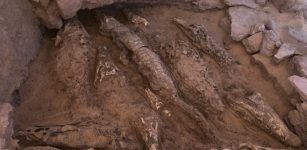 Mummified Crocodiles Provide Insights Into Mummy-Making Over Time
Archaeology | Jan 19, 2023
Mummified Crocodiles Provide Insights Into Mummy-Making Over Time
Archaeology | Jan 19, 2023 -
 How Did A Roman Sarcophagus End Up On A Beach Near Varna In Bulgaria?
Archaeology | Aug 6, 2024
How Did A Roman Sarcophagus End Up On A Beach Near Varna In Bulgaria?
Archaeology | Aug 6, 2024 -
 Human Migration Out Of Africa To Middle East Through Corridors Provided By Monsoons
Archaeology | Nov 27, 2019
Human Migration Out Of Africa To Middle East Through Corridors Provided By Monsoons
Archaeology | Nov 27, 2019 -
 Ephemeral Evidence Of Mediterranean Mobility – Boats, Migration, And The Central Mediterranean Passage In Focus
Archaeology | Dec 23, 2021
Ephemeral Evidence Of Mediterranean Mobility – Boats, Migration, And The Central Mediterranean Passage In Focus
Archaeology | Dec 23, 2021 -
 On This Day In History: First Battle Of Reading Took Place – On Jan 4, 871 AD
News | Jan 4, 2017
On This Day In History: First Battle Of Reading Took Place – On Jan 4, 871 AD
News | Jan 4, 2017 -
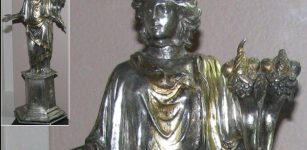 Abundantia: Roman Goddess Who Was Shaking Her Gifts From Cornucopia – ‘Horn Of Plenty’
Featured Stories | Nov 4, 2019
Abundantia: Roman Goddess Who Was Shaking Her Gifts From Cornucopia – ‘Horn Of Plenty’
Featured Stories | Nov 4, 2019 -
 Analysis Of Ancient Tools Challenges Long-Held Ideas About What Drove Major Changes In Ancient Greek Society
Archaeology | Aug 23, 2022
Analysis Of Ancient Tools Challenges Long-Held Ideas About What Drove Major Changes In Ancient Greek Society
Archaeology | Aug 23, 2022 -
 A Great Flood Destroyed The Mysterious Ancient City Of Petra – Evidence Has Been Found
Archaeology | May 12, 2017
A Great Flood Destroyed The Mysterious Ancient City Of Petra – Evidence Has Been Found
Archaeology | May 12, 2017 -
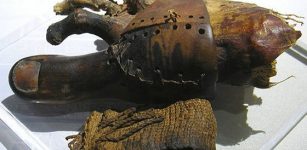 Prehistoric Evidence Of Sophisticated Prosthetics In Ancient Egypt – Artificial Toes Helped Egyptians Walk
Archaeology | Feb 20, 2014
Prehistoric Evidence Of Sophisticated Prosthetics In Ancient Egypt – Artificial Toes Helped Egyptians Walk
Archaeology | Feb 20, 2014 -
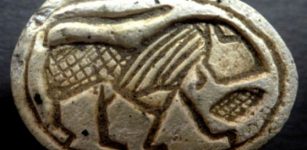 A Scarab Seal At Tel Gerisa, Depicts Walking Lion – Symbol Of Strength, Power And Authority
Archaeology | Sep 5, 2023
A Scarab Seal At Tel Gerisa, Depicts Walking Lion – Symbol Of Strength, Power And Authority
Archaeology | Sep 5, 2023 -
 Amaterasu: Shinto Goddess Of The Sun And Priestess-Queen Sister To Controversial Susanoo God Of Storms
Featured Stories | Jan 25, 2019
Amaterasu: Shinto Goddess Of The Sun And Priestess-Queen Sister To Controversial Susanoo God Of Storms
Featured Stories | Jan 25, 2019 -
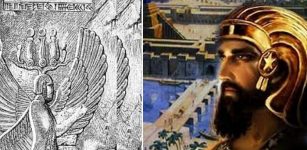 Cyrus The Great: Founder Of Achaemenid Empire Who Conquered Medians, Lydians And Babylonians
Featured Stories | Mar 21, 2019
Cyrus The Great: Founder Of Achaemenid Empire Who Conquered Medians, Lydians And Babylonians
Featured Stories | Mar 21, 2019


